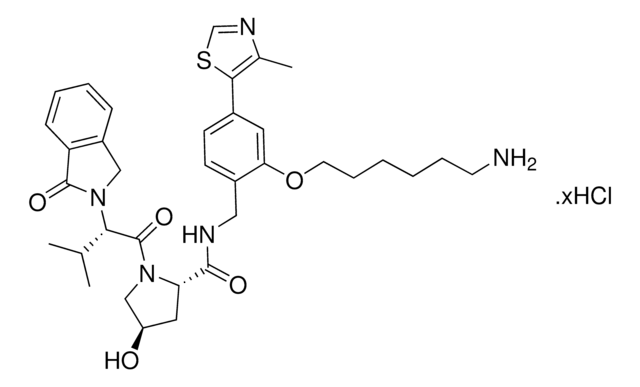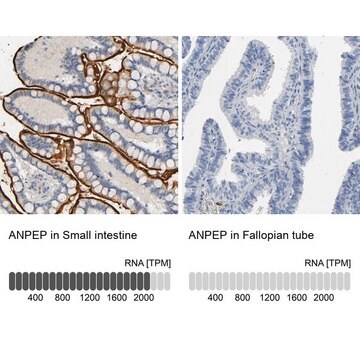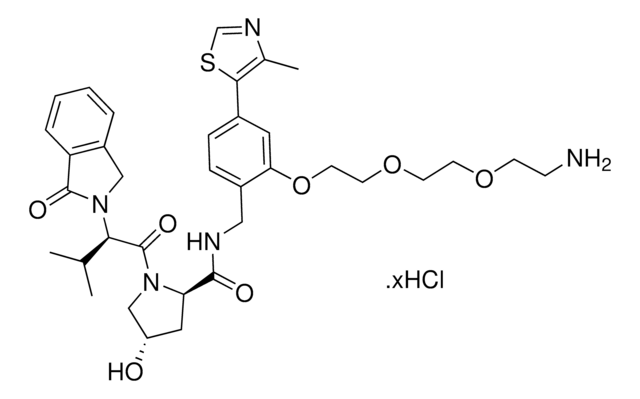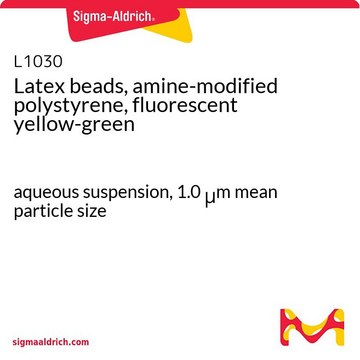919454
CCW16-PEG3-BocNH
≥95%
同義詞:
tert-Butyl (2-(2-(2-(2-(4-(4-(N-Benzyl-2-chloroacetamido)phenoxy)phenoxy)ethoxy)ethoxy)ethoxy)ethyl)carbamate, Crosslinker-E3 Ligase ligand conjugate, Protein degrader building block for PROTAC® research, RNF4-targeting building block, Template for synthesis of targeted protein degrader
About This Item
推薦產品
ligand
CCW16
品質等級
化驗
≥95%
形狀
liquid
反應適用性
reactivity: carboxyl reactive
reagent type: ligand-linker conjugate
官能基
amine
儲存溫度
2-8°C
SMILES 字串
O=C(CCl)N(CC1=CC=CC=C1)C2=CC=C(C=C2)OC3=CC=C(OCCOCCOCCOCCNC(OC(C)(C)C)=O)C=C3
InChI
1S/C34H43ClN2O8/c1-34(2,3)45-33(39)36-17-18-40-19-20-41-21-22-42-23-24-43-29-13-15-31(16-14-29)44-30-11-9-28(10-12-30)37(32(38)25-35)26-27-7-5-4-6-8-27/h4-16H,17-26H2,1-3H3,(H,36,39)
InChI 密鑰
ZBIUJJSRBDSDRU-UHFFFAOYSA-N
應用
其他說明
Portal: Building PROTAC® Degraders for Targeted Protein Degradation
Covalent Ligand Screening Uncovers a RNF4 E3 Ligase Recruiter for Targeted Protein Degradation Applications
Targeted Protein Degradation by Small Molecules
Small-Molecule PROTACS: New Approaches to Protein Degradation
Targeted Protein Degradation: from Chemical Biology to Drug Discovery
法律資訊
相關產品
儲存類別代碼
10 - Combustible liquids
水污染物質分類(WGK)
WGK 3
閃點(°F)
Not applicable
閃點(°C)
Not applicable
我們的科學家團隊在所有研究領域都有豐富的經驗,包括生命科學、材料科學、化學合成、色譜、分析等.
聯絡技術服務




![二苯并[a,h]吖啶 BCR®, certified reference material](/deepweb/assets/sigmaaldrich/product/structures/383/751/70b25872-405f-49b1-b76b-ed5e018ce265/640/70b25872-405f-49b1-b76b-ed5e018ce265.png)


